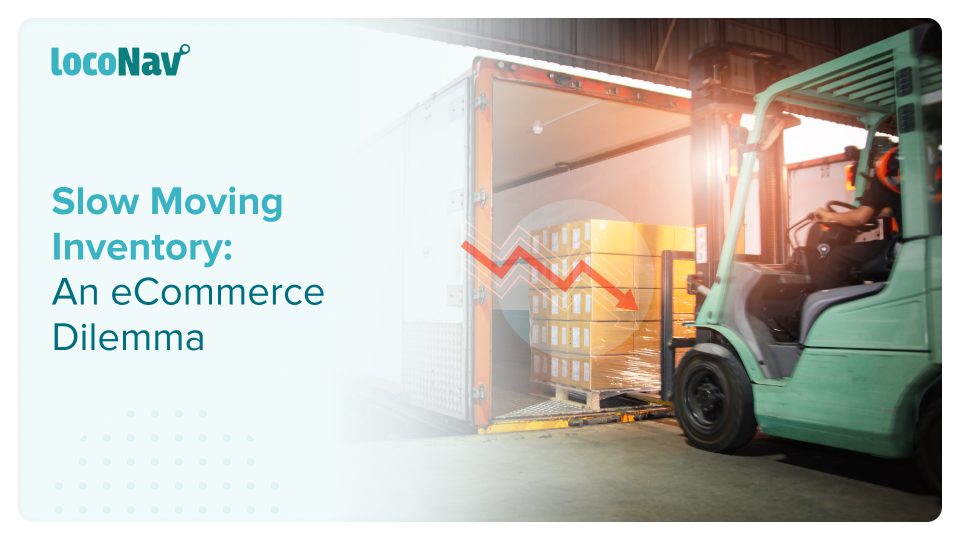

One of your company’s most valuable assets is its inventory. When inventory is slow to move, it can soon become a burden. Slow moving inventory ties up your company’s money and consumes resources that may be used to build the firm. As a result, it is critical to design strategies for mobilising the slow movers!
Let’s take a closer look at slow moving inventory and how to manage it.
How Do You Define Slow Moving Inventory?
Slow moving inventory includes any merchandise with a long sales cycle. This would often comprise SKUs that only move a few units every 3-6 months. However, in the eCommerce market, some businesses look at a shorter time frame.
Slow-moving things are usually more expensive or require a larger expenditure from the consumer. Refrigerators and washing machines, for example, are larger purchases that do not sell in large quantities. Slow moving inventory may also consist of seasonal items that sell well during specific times of the year but have minimal sales during the off-season.
The timeframe you use to identify slow-moving inventory and whether these products are profitable depends entirely on your eCommerce processes and present growth strategy.
Manage your fleet efficiently with LocoNav’s Fleet Management Solutions!
How To Track Slow Moving Inventory?
Different organisations use different methods for slow moving inventory analysis. However, three commonly used approaches are quite accurate –
- The first and most typical way is to calculate overstocked items. If a product has been sitting in a warehouse for 12 months with no demand for more than 6 months, it is termed slow-moving.
- Others use stock rotations to detect whether or not an inventory is moving slowly. This strategy is more precise because high stock flips are often beneficial to the organisation.
- The frequency of delivery is the third and most precise calculation. If a product has not been dispatched for a set period of time, say 120 to 150 days, it is considered slow moving inventory.
Practices For An Inventory Manager To Optimize Slow Moving Inventory
When a corporation recognises it has a slow moving inventory, the question arises of what to do about it. There are numerous ways of dealing with slow-moving inventory, but not all of them are suited for all causes. Here are a few ways for coping with slow-moving inventory:
- Use Real-Time Analytics
Real-time analytics are already being used in powerful sales and operations planning tools, which take a unified data model of demand, supply chain, and financial information, analyse it to any degree and deliver fast responses. Operating on a single platform where data is shared is critical for having a single view of inventories, costs, and a single platform against which to plan.
This enables you to have real-time inventories within that one model and even monitor who owns that inventory – even if you have a product consigned to me from my supplier, it’s still in the same inventory model.
- Consider Inventory Management Tools
Inventory optimization tools are gaining popularity as businesses seek to assess their whole network and identify the best inventory rules for each product at each touchpoint in their supply chain.
These optimization algorithms include demand and supply variables, and renewal parameters when determining how much inventory to keep on hand to protect against such variability.
- Be Smart About Slow Moving and Obsolete Inventory
While focusing on your more profitable quick movers makes sense, you can’t disregard your slower-moving products. Every day that these things are not utilised or sold, they take up space, consume labour and resources, risk obsolescence, and, in many cases, obstruct the usage of your more popular options.
Slow moving inventory is something that everyone casually overlooks. Well-managed operations will sell it or send it to thrift stores and off-price retailers.
- Keep a Check on your Suppliers
There are vendors who may not always follow their schedules or deliver on their promises. Most systems track an item’s inbound receipt: the promise date, the actual receipt date, the quantity ordered, the quantity acquired, and the state in which it was received.
After identifying untrustworthy suppliers, you can deal with them, fix any difficulties, and seek to improve a supplier’s performance – or keep more of their inventory to protect against their variability.
- Use Mobile Devices
Mobile technology and mobile user interfaces are increasingly widely used for inventory data capture. Mobile devices provide managers with instant access to precise information and data, allowing them to act quickly on inventory decisions. It also reduces the delays and errors associated with paper-based operations, increasing accuracy, efficiency, and overall business speed.
What Are the Risks of Not Identifying Slow Moving Inventory?
Slow-moving inventory can have a number of consequences for a corporation. Being conscious of them can assist businesses in navigating minor obstacles before they become major issues. Slow moving inventory can:
- Lose Value
The longer an object lies unused and unsold, the more likely its value will decrease.
- Be Prone to Theft
Natural disasters such as floods and fires can destroy goods, and theft is also a threat. The larger the value of a company’s inventory, the greater the likelihood of loss from such an adverse incident.
- Tie Up Capital
Purchasing inventory can be costly. Inventory that has been lying on shelves and in storage for an extended period of time reflects funds that may have been better spent elsewhere.
- Cost More to Hold
For some organisations, storing excess inventory is a significant expense. Carrying costs climb even more if products require refrigeration or more room than you have.
- Become Obsolete
If a corporation keeps inventory for too long, it may become obsolete and lose value (or close to it).
Why is it Important to Identify Slow and Fast-Moving Inventory Logistics?
A consistent cash flow is required for every business to succeed. This is only possible if inventory is constantly replenished. Because inventory stock movement is so important, a company should keep a close eye on and control stock movement.
Because it takes a significant amount of money, material, and people to maintain slow-moving stocks that take up warehouse space until sold, it becomes difficult for organisations to invest in other areas for future growth.
Every company involved in stocking or warehousing must identify slow-moving and fast-moving commodities. Real-time inventory movement and metric tracking can assist in making informed selections when procuring products, which will help the business expand.
